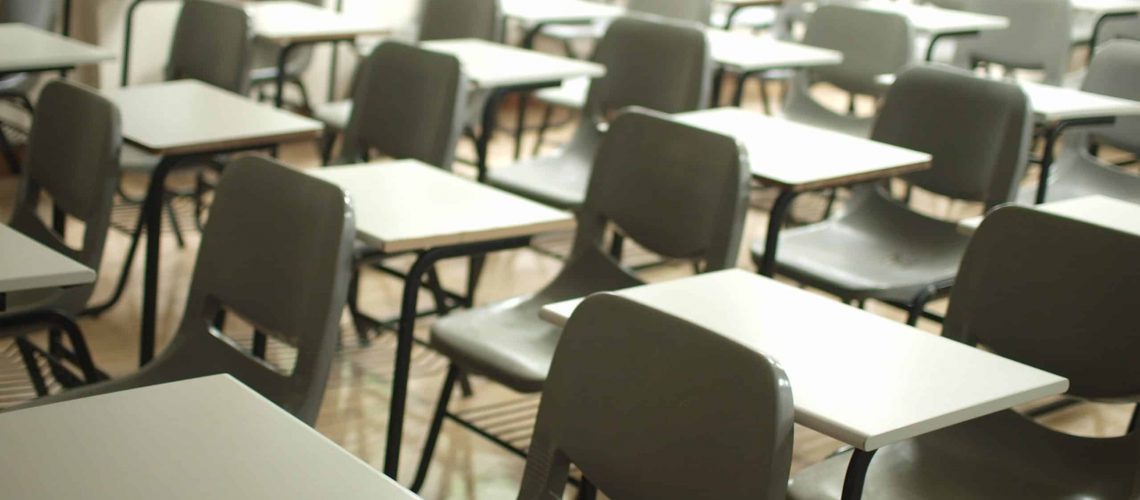HOW AND WHY IT HAPPENED. WHAT IT WILL TAKE TO REVERSE IT.
The Golden Age of U.S. Public Education
The “Golden Age” of public education culminated in the 1950s. It had steadily improved from one-room schools to become comprehensive, twelve-year systems. It was viewed as the primary means of upward social mobility.
- U.S. schools consistently ranked among the top tier in International Assessments.
- Schools were comfortably financed locally through property taxes.
- School support was widespread, bolstered by local control.
- The institutions of higher learning were generally satisfied with the high school graduates they were receiving.
- The workforce had little difficulty absorbing those students who stopped their education at the secondary level.
In short, the system was fulfilling its mission of providing free education to all. As a social service enterprise, it deserved a grade of “A”.
The U.S. Public Education Today
In the past 60 years, public education has deteriorated on almost all counts.
- U.S. schools are now in the middle group on International Assessments.
- Schools are chronically underfunded to the degree that their programs are compromised.
- School constituency support has waned, in large measure, because local control has been displaced by state and federal directives.
- The institutions of higher learning are having to “educate” incoming students before they successfully enter a college curriculum.
- The workforce now considers a large segment of high school graduates as “unemployable.”
The system has clearly slipped in meeting its mission. As a social service enterprise, it deserves a “C-” performance.
The Chronicle of Deterioration
This steady decline has has been documented in many ways. The first public notice came in 1983 with the publication of A Nation At Risk.
This report was the work of a blue-ribbon committee. Many of the members were consumers of public education – leaders from commerce, higher education, and governmental manpower programs.
Similar committees came to the same conclusion in 1990 (High Skills or Low Wages), and then again in 2007 (Tough Choices or Tough Times). As the succession of reports would indicate, there had been no substantial improvement in the 24 years since the first report was issued.
The first governmental response came in 2000 with the sweeping initiative called No Child Left Behind. This initiative was largely predicated on the premise that school personnel were the ones responsible for not meeting the educational needs of society. It is universally acknowledged that the initiative was a disruptive failure – it not only failed universally to meet its stated goals, but it made things worse.
Where Are We Now?
Today, we are left with a school system that is frustrated and confused. The school community is frustrated because, although the deterioration is widely acknowledged, there is no consensus on how it should be changed.
The initiatives since the failure of No Child Left Behind have been perfunctory and uninspired – more high-stakes testing, more evidence-based practices, a call for better teachers, and new curriculum goals – marginal changes, but no reforms.
The school community is confused because regulators and administrators neither understand the hole they are in, nor how they dug themselves in. Actually, their confusion is even compounded – they did not dig themselves into the hole – the Federal Government dug it for them.
How Did the Federal Government Create the Problems?
In a few words, the government changed the rules (of education) without changing the way the game (instruction) was played.
The mission of public education during the “Golden” era had been to provide a free, quality education to all students in the society.
- The schools satisfied this mission with an instructional system that presented the curriculum to each classroom as a group.
- It was the students’ responsibility to learn. The greater majority did learn; and so the outcome was, in terms of the mission, satisfactory.
- It was an efficient, cost-effective means of providing a free quality education to all students in the society.
How Did the Government Change the Rules?
However, in 1962, the government, as part of the War on Poverty, changed the mission of education in the United States.
The new mission was to insure that all students learn a solid, basic curriculum. There is a world of difference between having to provide a quality education to all students, and having to insure that every student will learn the curriculum provided.
With this change, responsibility for learning shifted from the student to the system. The system had previously been responsible to the group as a whole; now it needed to be responsible for every student.
While the Federal Government insisted that the schools play by new rules, the crowning irony of the change was, that at the same time, they required the schools to continue using a model of education that was designed for the old rules.
This is an organizational recipe for failure – to require radically different results from the extant set of practices. It stands as an institutional memorial to Einstein’s observation that insanity is doing the same thing over and over and expecting different results. ESEA, the legislation that changed the rules, had also dictated how the game would be played. Anyone involved in education in the last 60 years knows the scenario.
Operating Under the New Rules
Teachers present the curriculum to a classroom of students, teaching them with group-oriented practices:
- Presenting a succession of lock-step lessons.
- Most students learn, but a few (generally 15% to 20%) do not.
- The process continues until the first “bench-mark” tests.
- Then those students identified as non-learners are diverted to “special education.”
- At the end of the year, most of the non-learners are still non-learners.
In other words, the traditional instructional model, which ESEA embraced, expects differential learning results – a Bell-shaped curve of achievement in which the lowest quintile are the non-learners.
This perpetuated traditional education with a “special education” overlay.
This model might have been effective if the “special education” had actually put the non-learners back on track, but the nagging truth is that the non-learner class persisted.
There have been hundreds of different corollaries and addenda to the basic model:
- Individual Educational Programs
- individualizing the curriculum to meet differential student needs
- requiring evidence-based practices
- matching instructor gender to student gender
- matching instructor ethnicity to student ethnicity
- Response to Intervention
- higher standards and accountability
- redesigned and nationalized curriculum
The underlying model has remained the same for more than 60 years, and there has been no improvement in outcomes.
The Costs of the Two-System Structure
There are significant costs for operating with ESEA mode. Most important, of course, is the loss of human potential that the model was designed to recover.
Next is the cost of the program. We are spending significantly more today – even adjusted for inflation – than we were in the 1950s.
The reason is apparent: we are funding two programs – the regular program and the overlay of special education. The special-education overlay was designed to deal with the expected failures in the regular program. This is a doubly expensive means of dealing with failures. Foremost, it has not worked; but even supposing that it had worked, it would be very inefficient.
As a design, it memorializes the organizational thesis that an enterprise will either:
- tolerate 20% failure (traditional education)
- spend 80% of its resources to correct its failures (ESEA)
- or, redefine the its operations to have zero tolerance for failure (system reform)
Changing the Structure
Given the lack of success in meetings it goals, along with the added costs that have been borne in the process, it is astounding that the basic structure – the basic way of doing business – has not changed in more than 60 years.
Even more astounding is the fact that the topic of structural change is not under consideration at the national level.
Let’s use the “restart button” beginning with an examination of the new mission itself. What is required to educate all students to the best of his or her abilities? The answer in general pedagogical terms, is tutoring.
Tutoring is considerably more than just presenting lessons; it involves:
- constantly monitoring if the student is comprehending
- being able to diagnose problems in the students’ comprehending
- adjusting the instruction to deal with the cause or finding a remedy for the cause
- and, in all of this, having the freedom to let the student learn at a pace that will insure his or her mastery of the material
Mass (Large Group) Tutoring
This defines tutoring for an individual student, but how can we tutor 20 or more students concurrently? We cannot hire a tutor for each of the 50 million students in the K-12 system. (Even if we could afford it, there are not 50 million qualified tutors.)
Mass tutoring requires computer assistance. Computing assists in four different ways:
- Monitoring daily progress for all students, and providing alerts when learning failures occur. (no more sitting in the back of the room – everyone is in the front row)
- Presenting a significant portion of the curriculum to students individually.
- Providing a database to assist the teacher in dealing with specific learning failures – offering immediate access to the positive experiences of others.
- Providing electronic access to a network of consultants and other expertise in coping with student learn problems.
Mass tutoring cannot be done without changes in attitude at the classroom level.
The basic role of the teacher changes from presenter to enabler – the teacher is no longer an instructor; he or she becomes a learning coach.
- This is a difficult change – it means diminution of the instructor role, which has been primary both in terms of training and practice.
- It means developing new sets of skills – diagnosis, coaching, and networking with consultants and providers.
- It means adjusting to where each student is in the curriculum progression and giving up the mindset of having all the students on the same page. Individualized teaching preempts a traditional group mindset.
- It means adjusting to a classroom of students who are nominally assigned on the basis of age, but will range in achievement over a span of grade levels.
Mass tutoring cannot be done without changes in attitude at all administrative levels – local, state, and federal.
The basic measure of student achievement needs to change to reflect individual progress rather than performance relative to the group.
- Each student will compile a record of lessons mastered.
- Individual achievement is then measured based on how much of the curriculum has been mastered – not where a student ranks in group testing.
- Grade-level progressions need to be redefined. Some students will have acquired a complete K-3 curriculum in two years; others may require four years; but they will all be in the 10-year-old classroom together.
- Comprehensive testing will need to be administered individually as each student completes a defined segment of the curriculum, say, K-3.
Mass tutoring cannot be done without changing the evaluation of teacher performance.
The new measure of teachers’ performance needs to reflect the teachers’ new primary role of learning enabler.
- How quickly do they respond to notification of a student learning problem? The computer management system will automatically gather this data.
- How well do they use the intervention resources that are provided for them? The management system will gather this data.
- How well do they learn by operating in this environment, so they can become more self-reliant and thereby advance to more advanced helping roles in the system?
Does this proposed change imply that all schools would be regimented to the same implementation?
No. Actually, far less than they are currently.
- They would be free to employ whatever management software they desire as long as it produces the data that is required for review.
- They would be free to use whatever curriculum design they desire as long as they submit the outcomes for evaluation.
- They would be free to utilize whatever means of intervention they desire as long as they submit the outcomes for evaluation.
- In other words, they would be free to micro-manage their operations – exercise true local control. At the same time, they would, appropriately, be macro-managed by their funding sources.
Mass tutoring would create a transparent record of system performance.
- Teachers would have a daily record of performance in their defense, rather than the capricious outcomes of group-teaching statistics.
- Parents could have a complete record of their child’s performance, including the specific problems the students had; the specific help they received; and the effectiveness of those interventions.
- Students would have a certification of accomplishment for advancement or transition, not a ranking in terms of some nebulous standards.
- Taxpayers would be able to compare apples-to-apples when assessing the performance of their schools, districts, and states with others – the data would all be comparable.
- Schools would have a data-substantiated reputation (both good and bad) for consumers to consider – not just in terms of merit scholars, but in quality of student tutoring.
Summary
There are three ways to deal with performance failures in any service enterprise:
- Tolerate an acceptable level of failure. This is the underlying philosophy of traditional institutional education. Very efficient and cost-effective, but, in the long run, with adverse social consequences.
- Supplement the extant system with a specialty subsystem. This is the underlying philosophy of the ESEA implementation. Committing significant resources to modest levels of failure. Generally proves to be inefficient, and always proves to be cost-ineffective.
- Redesign the system to deal with the failures occurring in the extant operations. This is the underlying philosophy of mass tutoring. It is the most efficient, direct, and economical way of dealing with failure. It means changing the mindset of extant operations, which is never easy.
WE KNOW THERE IS A PROBLEM. WE HAVE YOUR SOLUTION.
SOI Certified Learning
Why Certified Learning?
- the curriculum meets state-defined requirements
- each lesson in the curriculum carries its own criteria of mastery
- students progress at their own pace in their group, workbook, and computer exercises
- if problems occur, they are detected early with the management system
- interventions are made to correct any problems detected
- all intellectual abilities are trained – cognition, memory, evaluation, and problem solving
written by: by Robert Meeker, Ed.D.






